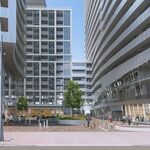smallspy
Senior Member
Another giveaway to that is the new, unpainted exterior panels around the doorways. The new doors have a different mechanism that is supposed to be far more reliable than the old ones.Not just repainted doors, those are actually new doors. The older doors don't have such large windows. It's a sort of anachronism to have a coach with five windows on the lower level (old) but also tall windows in the doors (new).
This is the first step in the rebuild process. In the past, cars were sent like this to CAD in Montréal or ONR in North Bay, where they would have the rest of the work done, including applying the new paint scheme.
The rebuild for the cab cars did not specify spec'ing the new doors in the process, for whatever reason.It's also odd cause the rebuilt cab cars from what I've seen don't have the newer tall window doors.
Dan




